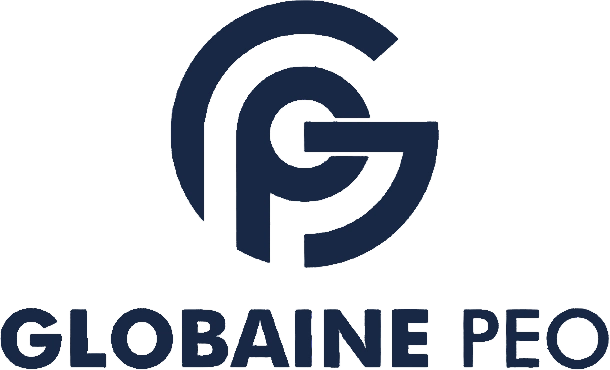Expanding your business into Vietnam requires meticulous attention to local labor laws and onboarding requirements to ensure compliance and foster positive employee experiences. Here’s a guide to the essential documents and steps involved in onboarding employees in Vietnam.
Onboarding Process: Step-by-Step Explanation
Step 1: Job Offer and Acceptance 
Trigger: After identifying and selecting the ideal candidate.
Action:
- Job Title: Clearly state the employee’s position and reporting structure.
- Compensation: Outline salary details, bonuses, and any additional incentive plans.
- Start Date: Provide a clear and agreed-upon start date.
- Working Hours: Specify expected working hours, including any overtime or flexible work policies.
- Benefits Overview: Include health insurance, social insurance, and any additional employee benefits.
- Probation Period: State any probationary period (typically up to 60 days for most positions in Vietnam).
Outcome: Once the offer is accepted, move forward with drafting the employment contract.
Step 2: Employment Contract 
When It’s Used: Immediately following offer acceptance.
Action: Draft a formal employment contract, adhering to Vietnamese labor laws. Include:
- Job Description: Define the employee’s role, responsibilities, and key performance expectations.
- Compensation Details: Specify base salary, bonuses, allowances, and any applicable overtime pay rates.
- Leave Entitlements:
- Annual Leave: A minimum of 12 days per year, increasing with years of service.
- Public Holidays: Vietnam observes 11 national holidays annually.
- Sick Leave: Paid leave based on contributions to social insurance.
- Parental Leave: Maternity leave of six months; paternity leave varies from 5 to 14 days.
- Working Hours: Typically 8 hours per day, 48 hours per week.
- Termination Conditions: Specify notice periods and reasons for termination.
Outcome: Both parties sign the contract, formalizing the employment relationship.
Step 3: Tax and Social Security Registration 
When It’s Used: Prior to the employee’s start date.
Action: Register the employee with Vietnam’s tax and social security systems:
- Social Insurance Enrollment: Mandatory contributions for health, unemployment, and pensions.
- Tax Code Registration: Obtain a personal tax code for proper tax withholding.
- Employer Contributions: Ensure compliance with contributions for social insurance (17.5%), health insurance (3%), and unemployment insurance (1%).
Outcome: Full compliance with Vietnam’s tax and social security regulations.
Step 4: Health and Safety Induction 
When It’s Used: On or before the employee’s first day.
Action: Conduct health and safety training to comply with workplace safety standards:
- Safety Guidelines: Provide an overview of emergency protocols and safety practices.
- Emergency Procedures: Introduce fire exits, emergency contacts, and first aid locations.
- Personal Protective Equipment (PPE): Supply necessary equipment based on the employee’s role.
Outcome: Employees are equipped with knowledge and resources to ensure safety at work.
Step 5: Payroll and Benefits Enrollment 
When It’s Used: Within the employee’s first week.
Action: Set up payroll and benefits systems:
- Bank Details: Collect the employee’s bank information for salary deposits.
- Benefits Enrollment: Register the employee for mandatory and company-provided benefits.
- Overtime Policy: Clarify overtime pay rates and conditions.
Outcome: Employees are successfully enrolled in payroll and benefits programs.
Step 6: Workplace Policies and Training 
When It’s Used: Within the first month.
Action: Introduce employees to workplace policies and training:
- Code of Conduct: Outline expectations for behavior and ethics.
- Training Programs: Provide job-specific training and compliance guidelines.
- Performance Metrics: Set performance targets and evaluation processes.
- Flexible Work Options: Discuss any available remote or flexible work arrangements.
Outcome: Employees are well-versed in company policies and expectations.
Step 7: Probation and Feedback Period 
When It’s Used: During the probation period (usually 30–60 days).
Action: Monitor performance and provide regular feedback:
- Performance Reviews: Conduct evaluations to assess employee fit and contributions.
- Guidance and Adjustments: Offer coaching and adjust roles as necessary.
- Employment Confirmation: Confirm the employee’s position post-probation or provide constructive feedback.
Outcome: Completion of probation, resulting in either permanent employment or feedback for improvement.
Summary Table of Key Onboarding Steps in Vietnam
| Step | Action/Details |
|---|---|
| Step 1: Job Offer & Acceptance | Job Title, Compensation, Start Date, Working Hours, Benefits, Probation Period |
| Step 2: Employment Contract | Job Description, Compensation, Leave (Annual, Sick), Public Holidays, Termination, Working Hours |
| Step 3: Tax & Social Security | Register for Social Insurance, Tax Code, Employer Contributions |
| Step 4: Health & Safety | Safety Induction, Emergency Procedures, PPE |
| Step 5: Payroll & Benefits | Bank Details, Benefits Enrollment, Overtime Pay |
| Step 6: Policies & Training | Code of Conduct, Job-Specific and Compliance Training, Performance Metrics |
| Step 7: Probation & Feedback | Performance Reviews, Role Adjustments, Employment Confirmation |
Key Takeaways
- Employment contracts in Vietnam must include detailed terms on compensation, benefits, and responsibilities.
- Compliance with Vietnam’s social insurance and tax systems is mandatory.
- Employers must provide safety training, benefits registration, and performance evaluation during onboarding.
How GlobainePEO Can Help with Onboarding in Vietnam 
GlobainePEO specializes in managing employee onboarding in Vietnam, from drafting compliant employment contracts to handling tax and social security registrations. Partnering with GlobainePEO ensures a seamless onboarding process, enabling your business to expand in Vietnam confidently and efficiently.

